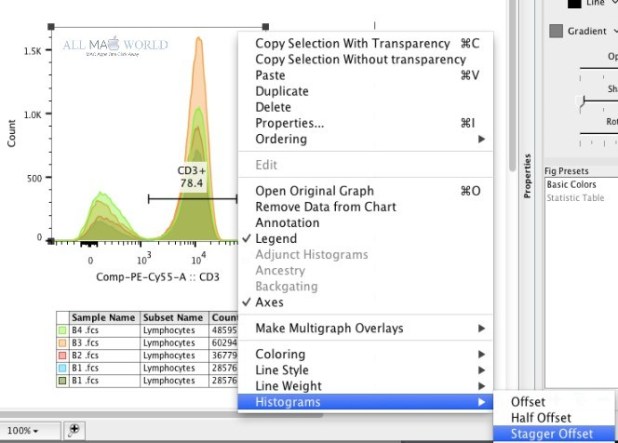


(C) Expression of membrane‐bound anti‐CD3 Ab fragment and TIM‐3 on TCS‐TIM‐3 (gray histograms). Results are from seven independent experiments performed in triplicates. (B) CEACAM1‐4L reporter cells coexpressing TIM‐3 were stimulated with control TCS or TCS‐expressing CEACAM1. Reactivity of antibodies to CEACAM1 and TIM‐3 to control TPR is shown as open histograms. (A) Flow cytometry analysis of TPR reporter cells coexpressing CEACAM1‐4L and TIM‐3 (gray histograms). TIM‐3 does not modulate CEACAM1 function. Results are from ten independent experiments performed in triplicates. Reporter activation is shown as fold induction (gMFI of TCS‐stimulated cells/gMFI of unstimulated cells). (D) The indicated TPRs were stimulated with control TCS or TCS‐expressing CEACAM1. The geometric MFI (gMFI) value is shown for each histogram. The histograms of unstimulated cells are also depicted. eGFP, eCFP, and mCherry expression was measured via flow cytometry. (C) Gating strategy and one representative stimulation experiment of control TPR and TPR‐expressing CEACAM1‐4S and CEACAM1‐4L with control TCS or TCS‐expressing CEACAM1 is shown.

Open histograms: control cells filled histograms: expression of indicated molecules on TPR and TCS. (B) Flow cytometry analysis of triple parameter reporter cells (TPR) and T cell stimulator cells (TCS). (A) Schematic of CEACAM1‐4L and CEACAM1‐4S proteins. For statistical evaluation, paired t‐tests (A–C E and F) and one‐way ANOVA followed by Tukey's multiple comparison test (D) were performed (***p ≤ 0.001 **p ≤ 0.01 *p ≤ 0.05 ns, p > 0.05).Įvaluation of CEACAM1 function in a reporter cell system. (G) Bar diagrams from five representative donors (from three experiments with one or two donors) show percentages of CD66a⁺‐expressing cells within the TIM3⁺ population. Right panels: summarized data of CD25 expression in the TIM3⁺ versus TIM3⁺/CD66a⁺ subset upon SEE (17 donors/8 experiments with 1–3 donors each) or aCD3/aCD28‐stimulation (11 donors/6 experiments with 1–3 donors each). Middle‐right panels: histogram overlay shows gMFI of CD25 expression on day 10 of the indicated populations. For better visibility larger dots were used in dot plots depicting TIM‐3 and CEACAM1 expression in CD8⁺ T cells upon stimulation with SEE. Left panels: dot plots from one representative donor are shown. In the stimulated samples, the gate was set on proliferated (CFSElow) cells. (E and F) CD4⁺ and CD8⁺ T cells in freshly isolated PBMCs and PBMCs stimulated in vitro with staphylococcal enterotoxin E (SEE) (E) or immobilized aCD3/aCD28 mAb (F) for 3, 6, and 10 days were analyzed for TIM‐3, CEACAM1, and CD25 expression, respectively. (A–D) Left: one representative donor right: each dot represents one donor. (D) Immature (iDC) and mature DCs were stained with TIM‐3 mAb (black histograms) or isotype control (open histograms).

CD19⁺ cells (A), CD56⁺ cells (B), and CD14⁺ cells (C) were analyzed for TIM‐3 expression. Flow cytometry analysis of TIM‐3 expression on freshly isolated PBMCs derived from healthy donors. All rights reservedĮxpression analysis of TIM‐3 and CEACAM1. Our results indicate that TIM‐3 functions independently of CEACAM1 and that this receptor has the capability to promote inhibitory signaling pathways in human T cells. Cytoplasmic sequences derived from TIM‐3 induced inhibitory signaling in our human T cell reporter system. Moreover, results obtained in extensive binding studies, were not in support for an interaction between TIM‐3 and CEACAM1. TIM‐3 and CEACAM1 co‐expression was limited to a small subset of activated T cells. Using a T cell reporter platform we confirmed CEACAM1 mediated inhibition, but CEACAM1 did not functionally engage TIM‐3. CEACAM1 has been proposed to bind TIM‐3 and to regulate its function. Its role may therefore depend on the state of T cells and on the presence of interaction partners capable to perform functional pairing. In T cells, inhibitory as well as activating functions 0have been ascribed to this molecule. TIM‐3 has been considered as a target in cancer immunotherapy.


 0 kommentar(er)
0 kommentar(er)
